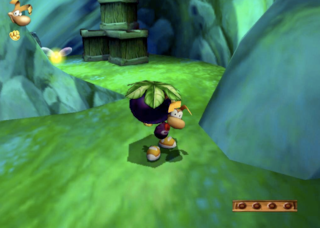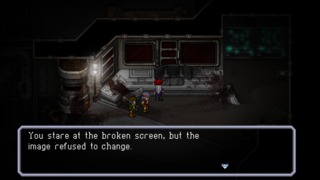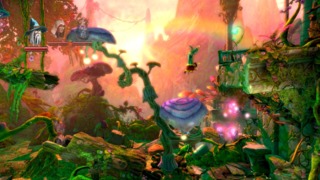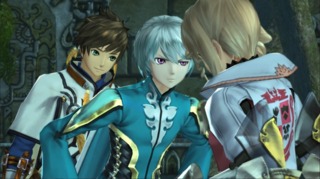All-New Saturday Summaries 2017-08-19
By Mento 1 Comments
Welcome back everyone to another Saturday Summaries, rounding up a week's worth of blogging. I say that, but it's just the same two blog series as always. I'd write more, but I'm now playing four games simultaneously, which is rarely a state I like to be in as it means my focus is just everywhere and nowhere. It kinda feels like the movie Inception, where I have all these playthroughs nested inside one another, and I have to complete a game before I can go back up one level and resume where I left off with the previous game on my list. Hopefully I can crawl back up several layers before Tuesday rolls around and I add another PS2 playthrough to the mix.
Anyway, since everyone's talking about Sonic Mania again I thought I'd revisit my Sonic Dichotomy (or Sonichotomy) theorem. I realized halfway through recalling it that there was a flaw in it that I'd overlooked, because it ran perpendicular to how I play games, but not necessarily to how everyone else plays games. The Sonichotomy, just to refresh, concerns the original Sonic games and how their core game design is at odds with itself. The original Sonic games were built around the idea of showing off the speeds of the Sega Mega Drive, one of the few advantages it had over the stronger but slower SNES. Sonic was promoted not only as a badass animal with attitude (though he thankfully hadn't started talking yet), but as someone who could literally run rings around the "competition". The games emphasized speed as a result, and of letting oneself fly off at near incomprehensible velocities through loop-de-loops and tunnels. It's exhilarating, provided you knew when to stop or jump before something killed you, and allowed Sonic to be one of the few mascot platformers to boast an entirely new strain of presentation and gameplay. However, the paradox is can be found in how Sonic is still - deep down - beholden to the same collect-a-thon rules as Mario and the rest: in order to properly complete the game, you need to very carefully collect rings (getting hit just once causes you to lose most of them) so you can qualify for bonus stages and, through them, acquire the Chaos Emeralds. Without the Emeralds, you essentially receive a bad ending where Robotnik taunts you with the gems, letting you know that you ultimately failed in your mission to stop him. This cautious ring-collecting is antithetic to the carefree, high-speed approach the game would prefer you undertake - dashing through levels at top speed would make it near impossible to find all the rings you need to maximize your odds in the bonus stages, and far too easy to lose any rings you'd found anyway.
But I realized that, maybe for the majority of Sonic fans, beating Robotnik to the Chaos Emeralds isn't all that important. Maybe that majority would be just as happy whizzing through the levels not worrying about their ring and Emerald totals, just enjoying the sights and sounds and speeds of Sonic the Hedgehog. The perfect collection record and suffering the indignity of an insufficient ending is definitely more a personal bugbear, hence why I'm stuck trying to 100% half a dozen games right now as more get added throughout the month. People are obviously allowed to enjoy games however they wish, and even though I feel Sonic still has this dealbreaking contradiction in the heart of its original design, I can't begrudge a generation of Sonic fans who prefer the journey to the destination. I very much hope Sonic Mania begins Sonic's true comeback for those fans (and, given it's been more than 25 years since his debut, an entry point for the children of said Sonic fans. I just have to hope none of those kids are called Tails or Shadow. Or Cream. Or Big).
Speaking of journeys, let's take a stroll through what I've been up to elsewhere on this website:
- The Top Shelf this week revisited Rayman Revolution, the slightly buggy PS2 remaster of Ubisoft's PS1 platformer sequel Rayman 2: The Great Escape. I clearly hadn't given Rayman a fair shake when I first played this game, put off by some of the characters and setting and its loose world design that has you navigating expansive hubs to find the next level. It's only after playing the two excellent Rayman reboots - Origins and Legends - that I've garnered an appreciation for Michel Ancel's limbless hero and his fairytale world full of lums and teensies. While there are definitely problematic areas of Rayman Revolution - a few chase sequences seem poorly optimized and frustrating as heck as a result - this playthrough has felt like discovering a lost 3D platformer gem and I've been appreciating my time with it. 3D platformers will come back, eventually, but for now I want to take my time with the handful of quality older titles I missed out on.
- The Indie Game of the Week is the excellent Trine 2, the sequel to Frozenbyte's co-operative 2D platformer Trine. The Trine series shines, in more ways than one, through its attractive if bloom-heavy environments and through its puzzles, which are versatile enough to allow for multiple solutions depending on the characters you prefer (or, if playing three-person multiplayer, the sole character you're stuck with). The wizard and his boxes make a lot of traversal issues a breeze, while the thief can simply swing above everything with her grappling hook. Even the knight, who tends to be the heavy tank of the group best suited for taking down enemies, can find himself with a few useful abilities to get around difficult terrain easier. Like Rayman, it's a very collectible-friendly game, so I'm having to will myself not to play any more until some of the other games on my backlog are completed.
Addenda
Since we're once again looking at a week where I made zero progress with my current game - that would be Tales of Zestiria, for the second month in a row - I decided I'd put together a shorter series of follow-up posts to the games I've been playing since last Saturday. I'd only managed to make so much progress in these games before writing them up for their respective features. As I get closer to actually having the full picture, I wanted to check in and see if my opinions have shifted much.
Rayman Revolution

Rayman's been taking up most of my gaming time since starting it on Monday, and currently I'm about 90% of the way through the game - at least, according to the in-game progress tracker. I perhaps gave it too much of a pass in my original review, which neglected to mention just how glitchy the game could be. As I stated above, it's most prevalent during the game's fast-paced sections, including one part in a fire temple where you ride a "living shell" - essentially a missile that acts like a horse - through an obstacle course. If you hit a wall, you end up getting bounced harshly in the opposite direction, making it unfeasibly difficult to course correct before you hit too many walls and explode. There's also a loop-de-loop that, because the apex of the loop intersects with the walking shell's model briefly, will cause you to suddenly explode for no apparent reason.
Despite these frustrations, I'm continuing to enjoy the game's variety and its slightly askew means of progression. At least once I've had to return to an earlier hub area because a new level just opened up, and while it was initially a little off-putting I've come to like how the game keeps throwing these curveballs at you. Rayman could theoretically go directly after each of the "mask" McGuffins he needs to beat the big bad guy, but there's a procession of wrinkles - like rescuing his suddenly captured friends or disabling generators that are powering forcefields in Rayman's way - keep him distracted from his main mission. It feels like I'm taking part in a protracted tug of war with the enemy, as they keep foiling my plans while I'm in the process of trying to foil theirs.
Current progress: I'm so close to the end, I just want to bash it out today and be done with it so I can switch back to the games below.
Cosmic Star Heroine

I made a little more progress in Cosmic Star Heroine after the write-up last Friday, reaching the "airship" point of the game where I can explore its universe in a slightly more free-roaming sense than the plot railroad I've been on so far. I'm currently on the second of the game's three planets, Rhomu, and I've noticed the game has been using these Chrono Trigger style overworlds - ones where your characters are barely specks on a bigger map, with no random encounters to worry about. Like Chrono Trigger, there are clearly marked areas that I need to visit to progress the main mission, but there's also a few optional remote locations like caves and such worth exploring for their useful items and monster experience. We're also at the point where I can choose from a wide variety of party members with which to assemble a team rather than be provided a quartet that's fixed for story reasons, so I've been experimenting with combinations to see which members work best together. Fortunately, everyone levels up at the same speed whether they're in the party or not, so it's no big disadvantage if I bring someone into the fold that I haven't used in a while. However, I will need to keep their equipment up to date and their ability palette optimized, since each character can only have so many abilities active at any one time and are constantly learning new ones. If I haven't used someone in a while, I'll often find that they've since learned three or four new abilities I've not tried out yet.
Current progress: I'd estimate that I'm about halfway through the game. I'm anxious to get back to it so I can reach the third planet, which I've yet to see. I also wandered into a superboss by mistake (it's also a callback to an earlier Zeboyd game, which is cute) and realized that... man, I have some way to go levels-wise before I'm ready to face it.
Trine 2

I marked a point in Trine 2 where I could happily stop and revisit the game later, after clearing some of the other games on this list. The story's straightforward enough that I shouldn't need to worry about resuming it again weeks from now if need be, and the mechanics are intuitive enough that I managed to pick up the controls right from where I left the original Trine after playing it last May. Each level takes around 30 minutes to an hour, and I have about 10 of them left, so I might just get into the habit of starting each day's gaming session with an hour of Trine 2 before moving onto something else. Because I haven't made a whole lot of progress since Thursday's write-up, I've not much more to add: Trine 2 is still an excellent puzzle-platformer, if a slightly less excellent side-scrolling hack-and-slash game, and trying to manipulate the puzzles not only to make progress but to collect all the out-of-the-way blue XP objects is fun in a slightly chaotic way, as you're often tussling with the physics engine in order for it to play nicely for once. It definitely errs towards gaming comfort food, especially given how similar it is to the Enchanted Edition, but that's perfectly fine with me.
Current progress: About halfway through the original campaign if the level overview screen (which tells you how many collectibles you've found, among other details) is anything to go by. With the additional DLC campaign that's included in this Complete Edition, I'd estimate that I'm about one third of the way through the game's content overall. It'll take a while, but it's the sort of game I'm happy to dip in and out of while playing others.
Tales of Zestiria

I think it's been two weeks now since I last booted up Tales of Zestiria. It shouldn't be too tough to get back into it though, as it has an in-game journal for its story and a rather neat quest log system - you don't so much refer to a screen full of side-quests in a vague order, but instead can turn around and talk to your companion who has something to say for every major story mission and currently active side-mission, keeping you informed of everything you could be doing at that moment. I've also been fastidiously keeping notes on places to revisit, items I'm missing, and trophies I'm intending to earn. Zestiria won't be an easy Platinum - there's a lot of really grindy stuff in there, and plenty of difficulty-based trophies that'll necessitate a NG+ run at some point - but I'd like to get some of the completionist ones knocked out before I move on.
Current progress: I feel like I've run of geography to explore, so I'm at that juncture in any JRPG where you visit a bunch of older locations for some resolution to earlier arcs as the game heads towards its finale. I'm plowing through the optional superbosses that grant you extra HP orbs, though I've still got a few left to hunt down, so I imagine my party's getting close to the point where it's ready for the final battle. Even so, there's some tough situations I've been putting off, like the Crucibles: essentially single-person assaults on large groups of enemies in an arena mode of sorts, and that means playing as characters that I don't have much experience with. If you've played a lot of modern JRPGs, you know that the optional content towards the end-game can almost outweigh everything else you've done so far put together. I might be a few hours away from completing the game, or a few dozen.
